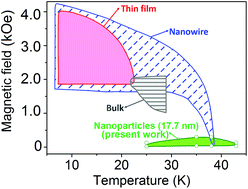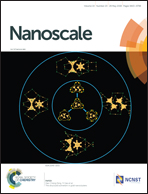Effect of size confinement on skyrmionic properties of MnSi nanomagnets
Abstract
Bulk magnetic materials with the noncentrosymmetric cubic B20 structure are fascinating due to skyrmion spin structures associated with Dzyaloshinskii–Moriya interactions, but the size of skyrmions are generally larger than 50 nm. The control of such spin structures in the 10 nm size ranges is essential to explore them for spintronics, ultra-high-density magnetic recording, and other applications. In this study, we have fabricated MnSi nanoparticles with average sizes of 9.7, 13.1 and 17.7 nm and investigated their structural and magnetic properties. X-ray diffraction and transmission electron microscope studies show that the MnSi nanoparticles crystallize in the cubic B20 structure. Field-dependent dc susceptibility data of the MnSi samples with average particle sizes of 17.7 and 13.1 nm show anomalies in limited field (about 25–400 Oe) and temperature (25 K–43 K) ranges. These features are similar to the signature of the skyrmion-like spin structures observed below the Curie temperature of MnSi. Our results also show that this anomalous behavior is size-dependent and suppressed in the smallest nanoparticles (9.7 nm), and this suppression is interpreted as a confinement effect that leads to a truncation of the skyrmion structure.



 Please wait while we load your content...
Please wait while we load your content...